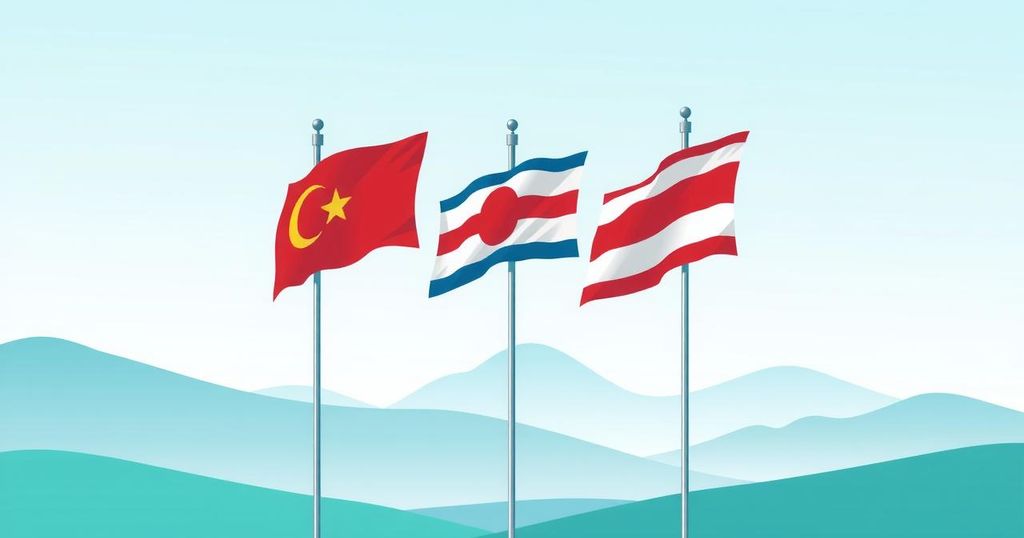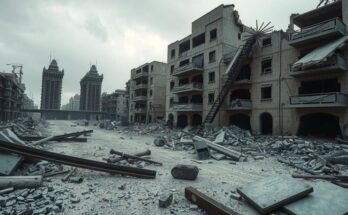Syria’s recent political transition faces hurdles, including skepticism towards new leadership, external influences, and historical sectarian tensions. The new regime, while supported regionally and internationally, operates under scrutiny. Key communities such as the Druze must navigate complex relationships, while Iranian influence remains a concern amid the evolving political landscape. A controversial constitutional proposal adds to the debates surrounding representation and unity in a diverse Syria.
The recent shift in Syria after decades of Assad rule may face significant challenges due to troubling events earlier this month. New leadership in Damascus seems aware of former regime remnants’ presence, though many local communities have benefited from their past actions without being directly involved. Some factions harbor doubts about the compatibility of coexistence with the new government’s interpretation of political Islam, reflecting on the country’s history of sectarian violence over the past 14 years.
Despite enjoying popular support, the interim authorities’ legitimacy is tenuous, emerging under extraordinary conditions that could shift rapidly. Observers note that while the new regime currently possesses regional and international backing, it operates under close scrutiny from global powers. The evident self-assurance of top officials is notable, especially as it appears to exceed that of many Syrian citizens.
The swift announcement of a new agreement between the Damascus authority and the Kurdish-led Syrian Democratic Forces (SDF) is indicative of Washington’s acceptance of the new leadership. As a vital ally in U.S. strategy for Syria, the SDF’s collaboration signals that Syria’s territorial integrity will remain secure against any separatist tendencies from Kurdish factions. The situation may encourage the Druze community in southern Syria to consider similar ties.
The Druze, particularly in southern Syria, maintain significant influence, yet a clear resolution may be slow to emerge. International factors, such as an Israeli campaign to “assist” the Druze, have complicated dynamics in the Druze-majority region of Suwayda, even though this support was not publicly requested by local leaders. Mention of financial backing by Israel for these initiatives has raised concerns about ulterior motives, reflecting long-standing planning that might involve regional and diaspora implications.
Despite various factions in Suwayda seeking engagement with Damascus for unity, Israel’s influence complicates these efforts. In southern regions like Suwayda, Deraa, and Quneitra, U.S. priorities appear largely aligned with Israel’s interests, further entangling local dynamics.
Meanwhile, the Alawite majority along Syria’s coastal regions faces challenges from paramilitary operations, which are supported by Iran. Statements from Iranian officials before recent militia attacks highlight their disapproval of the Damascus authorities and reinforce an expectation that current leadership will not endure. However, there are questions about whether Tehran accurately understands the relationship dynamics between the new Syria and the international community.
The U.S.-Israeli strategy aims to diminish Iranian influence, which may account for the restrained responses observed in international forums concerning recent violence resulting in approximately 1,225 deaths. The UN Security Council has condemned this violence and urged the Damascus authorities to ensure the protection of all citizens, irrespective of ethnic or religious identities.
The announcement of a draft constitutional declaration in Damascus has stirred controversy, particularly regarding its centralization of powers in the presidency and the proposed changes to the judicial system. Critics suggest that it would be prudent to focus on expanding political representation and addressing communal concerns more representatively. Fostering unity and inclusivity among Syria’s diverse communities is paramount, as the country must draw upon all its citizens’ talents for a sustainable future.
In summary, the new direction for Syria is fraught with complexities stemming from historical conflicts, local dynamics, and international influences. Both new leadership and community factions face challenges in achieving coexistence and stability within a backdrop of skepticism and external pressures. The ability to engage broadly with all communities while navigating external expectations will be crucial for a peaceful and unified future in Syria.
Original Source: www.arabnews.com




